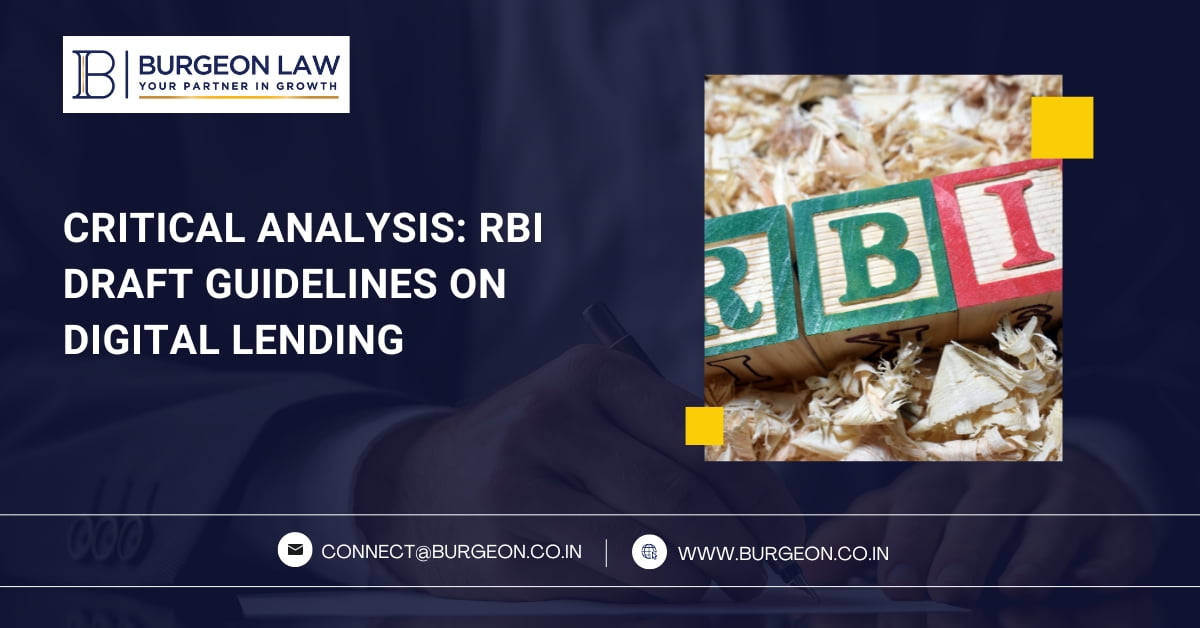Introduction
Recently in April, 2024, the Reserve Bank of India (“RBI”) released the Draft Guidelines on ‘Digital Lending – Transparency in Aggregation of Loan Products from Multiple Lenders’ (“Draft Guidelines”). The Draft Guidelines stem from the Statement on Developmental and Regulatory Policies dated December 08, 2023 wherein it was announced that RBI will issue a regulatory framework for aggregation of loan products by lending service providers or regulated entities (“REs”) acting as lending service providers (collectively “LSPs”).
Table of Contents
ToggleBackground
The Draft Guidelines focus on LSPs’ aggregating loans through their digital lending apps/platforms. Considering LSP’s role of matching the potential lender, the RBI in the Draft Guidelines notes that certain LSPs have outsourcing arrangements with several lenders and in such situations the customers may not have upfront information of the potential lender before availing loans. In order to remedy this situation, the RBI has released the Draft Guidelines in order to lend transparency to the process and enable customer awareness.
Key Highlights
Through Draft Guidelines, RBI focuses on making abundant information available to the customers of aggregator LSPs and to ensure a level playing field for all REs offering loans on digital lending apps. The following are the key highlights of the Draft Guidelines:
1. Digital View
LSPs are required to provide a digital view of all loan offers available to the borrowers as per their requirement, from all willing lenders with whom the LSP has arrangements. Furthermore, RBI has specified that the name of the lender, the tenor of the loan, Annual Percentage Rate, other key terms and conditions, and the Key Fact Statement (“KFS”) should be displayed on the digital lending app. This will provide a holistic view of the loan terms and the lenders to the customers and enable informed decision making.
2. Willingness
As a clarification to what would constitute ‘willing’ lender as specified in (a) above, the LSPs shall have the discretion to choose the criteria to ascertain the willingness of a lender to offer a loan, however, RBI has specified that the LSPs will be required to follow a consistent approach which should also be disclosed appropriately on the website.
3. Removal of platform bias
To further ensure customer protection, the Draft Guidelines specify that an LSP shall be unbiased and not indirectly promote or push a product of a particular RE. The Draft Guidelines additionally specify that LSPs shall not use Dark Patterns as defined under Section 2 (e) of the Guidelines for Prevention and Regulation of Dark Patterns, 2023.
Analysis
The Draft Guidelines pave the way for transparency and customer protection as it will provide adequate data to the users of digital lending apps/platforms. This will foster trust in digital lending platforms and further accelerate growth as users will be better equipped to make informed decisions. However, there is certainly further clarity required given the brief nature of the Draft Guidelines. Notably, the criteria to determine willingness is required to be displayed appropriately on the website, however, there is no clear guideline on the willingness criteria and extant of the disclosure required to be made by the LSPs. Additionally, since each RE may have different lending criteria and willingness emanating from such criteria, a unified standard (which will be displayed) may not effectively address the nuances of individual REs’ assessments, potentially undermining the purpose of a standardized disclosure.
Dark patterns in a financial aggregator marketplace remain to be tested by the RBI from a regulatory perspective, in this regard, more clarity on the dark patterns being implemented in LSP aggregator model may be required in the final guidelines in order to ensure clarity on implementation. Furthermore, while it is commendable that removal of biases will ensure a level playing field, it further makes the role of an aggregator LSP more binary in nature where their involvement may be limited to being a mere conduit of the loan offers being provided by the REs rather than being able to specify loan offers as per each customer’s needs. However, aggregator LSPs would now be required to undertake comprehensive measures in order to ensure that all relevant data is specified on the website. Additionally, clarity is still to be provided as to when the information required to be displayed on the website (including KFS, loan details, etc.) will become available to the borrowers considering displaying upfront information about all such terms may not be feasible as the information in the KFS or other relevant information may differ as per the assessment of each borrower by an RE, and it may be difficult to specify correct information in the first instance without appropriate due diligence of a borrower. This may result in a situation where there is dual incidence of information based on the data available to the LSP, which defeats the purpose of having upfront information.
While the larger intended theme of the Draft Guidelines is being appropriately addressed, the devil lies in the detail and more so in the implementation of the Draft Guidelines. It is expected that the Draft Guidelines may undergo changes in order to bring procedural clarity regarding various open-ended points in the Draft Guidelines and a more comprehensive set of guidelines may be implemented.
Author: Anish Jaipuriar
Co-Author: Divyam Sharma

